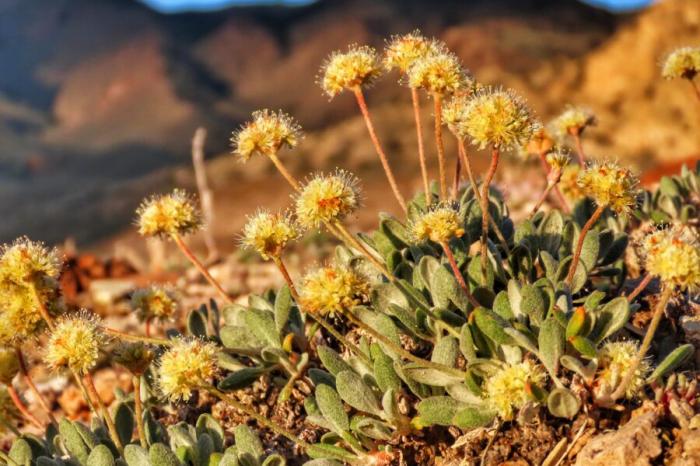RENO, NEVADA — On September 19, the Bureau of Land Management (BLM) announced the completion of its final environmental review for a proposed lithium mine in Nevada. This mine, essential for the production of batteries for electric vehicles, is expected to operate without jeopardizing the survival of an endangered wildflower known as Tiehm’s buckwheat.
Environmental Review Completion
The final environmental impact statement (EIS) represents a culmination of efforts from various agencies aimed at balancing the need for critical minerals with environmental protections. BLM Director Tracy Stone-Manning stated, “This environmental analysis is the product of the hard work of experts from multiple agencies to ensure that we protect species as we provide critical minerals to the nation.”
However, the EIS is currently open for a 30-day public comment period, and environmental advocates are preparing for legal challenges. Critics argue that the mine violates the Endangered Species Act and poses an existential threat to Tiehm’s buckwheat, which exists only in a limited area near the California border, approximately halfway between Reno and Las Vegas.
Industry Response and Project Milestones
Ioneer Ltd., the Australian mining company spearheading the project, heralded the review’s completion as a significant milestone in their six-year effort to establish the Rhyolite Ridge mine. The company aims to commence lithium production by 2028, a material critical for electric vehicle batteries.
Managing Director Bernard Rowe emphasized the project’s importance, stating, “Today’s issuance not only advances the Rhyolite Ridge project but brings the United States closer to a more secure and sustainable source of domestic critical minerals.” The mine is projected to yield enough lithium to power nearly 370,000 electric vehicles annually. Furthermore, global lithium demand is anticipated to increase sixfold by 2030 compared to 2020 levels.
Concerns from Environmental Advocates
Opponents of the Rhyolite Ridge project argue that it exemplifies a broader trend of the Biden administration compromising U.S. wildlife protections in the pursuit of climate change mitigation. They contend that the administration is prioritizing the reduction of fossil fuel dependence over the safeguarding of native species and sacred tribal lands.
In December 2022, the Fish and Wildlife Service designated Tiehm’s buckwheat as an endangered species, citing mining activities as the primary threat to its survival. Patrick Donnelly, Great Basin director for the Center for Biological Diversity, expressed his disappointment in the BLM’s approach. He stated, “It’s an outrage that the BLM and Fish and Wildlife Service capitulated to the demands of a mining company whose plans clearly run afoul of the Endangered Species Act.”
Regulatory Compliance and Habitat Concerns
Despite assurances from the BLM, environmentalists maintain that the current mining plan has not substantially changed from earlier drafts. Critics argue that the mine will still significantly disrupt the flower’s critical habitat, which consists of approximately 10 acres scattered over eight sub-populations.
The BLM has insisted that Ioneer has revised its plans to minimize habitat destruction for Tiehm’s buckwheat. Laura Daniel-Davis, acting deputy secretary of the Interior Department, noted, “The Rhyolite Ridge project represents what we can do when we work together—with industry, states, tribes, and stakeholders—to ensure the swift consideration and adaptation of projects to fulfill our energy needs while respecting cultural and ecologically sensitive areas.”
Mitigation Efforts and Controversial Propagation Plans
Ioneer’s mitigation strategy includes plans for a controversial propagation effort aimed at growing and transplanting Tiehm’s buckwheat in nearby areas. Conservationists, however, have expressed skepticism regarding the feasibility of this approach, arguing that it may not adequately protect the species in its native habitat.
Ioneer Executive Chairman James Calaway reaffirmed the company’s commitment to contributing to the domestic supply of critical materials, emphasizing, “We are eager to get to work in contributing to the domestic supply of critical materials essential for the transition to a clean energy future.”
Contextualizing Lithium Mining in Nevada
Nevada is currently home to the only active lithium mine in the United States, with another mine under construction near the Oregon border, approximately 220 miles north of Reno. The Lithium Americas mine at Thacker Pass has faced numerous legal challenges from environmentalists and Native American tribes who argue that the site is sacred land, where their ancestors were massacred by U.S. troops in 1865.
These ongoing challenges highlight the complex interplay between environmental protection, indigenous rights, and the growing demand for critical minerals necessary for a clean energy transition.
Conclusion
The debate surrounding the Rhyolite Ridge lithium mine underscores the ongoing tension between environmental conservation and the urgent need for sustainable energy sources. While the BLM has completed its environmental review and expressed confidence in the project’s viability, significant opposition remains.
As the 30-day public comment period unfolds, both proponents and opponents of the mine will continue to advocate for their respective positions. The outcome will have lasting implications for both the endangered Tiehm’s buckwheat and the broader context of lithium mining in the United States. The discussions ahead will be crucial in determining how the nation balances its energy needs with the responsibility to protect its unique natural heritage.
Related topics:


